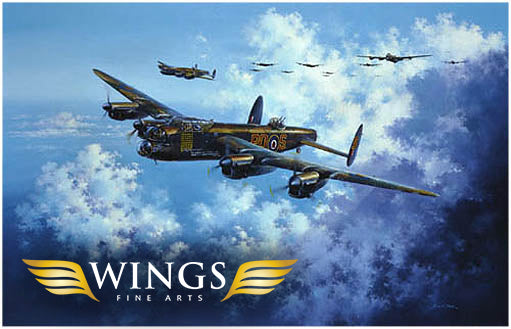Up Amongst Eagles by Anthony Saunders
- Variant: Limited Edition
- In Stock: 5
- Brand: Wings Fine Arts
- Collection: New Releases in Aviation Art
Product Specs
Up Amongst Eagles
by Anthony Saunders
This painting, portrays a magical scene in the Bavarian Alps during the winter of 1943 where, passing low over the fairytale Neuschwanstein Castle, the Bf109 pilots of 7./JG3 are led by their Gruppenkommandeur, Major Walther Dahl.
When the prototype of Willy Messerschmitt's radical all-metal single-seat monoplane fighter first took to the air in May 1935 little did onlookers realise they were witnessing the birth of one of the world’s most iconic aircraft.
Sporting sleek lines, a closed cockpit and retractable landing gear the Bf109 was soon wowing the crowds at the 1936 Berlin Olympics, an ominous prelude to its worth in battle after its introduction into service with Germany’s Condor Legion in the Spanish Civil War the following year. It was clear to friend and foe alike that this agile, well-armed little fighter was superior to anything else in the skies and by the outbreak of World War II the Bf109 formed the backbone of Hitler’s new Luftwaffe. With battle-hardened pilots well-prepared for success in Poland, the Low Countries and France, they were now ready to duel with RAF Fighter Command during the
Battle of Britain.
Continuously improved and upgraded more Bf109s were produced than any other military aircraft in history, with one exception, the Soviet’s Il-2 Sturmovik. The much-feared fighter was flown by the highest scoring Aces of all time – men such as top-scorer Erich Hartmann (credited with 352 aerial victories), Gerhard Barkhorn (301 victories), Günther Rall (275 victories) and the highest-scoring ace in North Africa, Hans-Joachim Marseille (158 victories).
Overall size: 19¼" x 26¼"
Available in the following editions (signed by the artist):
- 275 Limited edition $105
- 25 Artist's proof $160
- 15 Remarque $510
- 10 Double Remarque $795
- Limited edition 2 print set - Up Amongst Eagles & Where Storm Clouds Gather $175
- Artist's proof 2 print set - Up Amongst Eagles & Where Storm Clouds Gather $250
- Remarque 2 print set - Up Amongst Eagles & Where Storm Clouds Gather $875
- Double Remarque 2 print set - Up Amongst Eagles & Where Storm Clouds Gather $1330
- 75 Giclée Studio proof Giclée on canvas - stretched (24" x 36") $595







